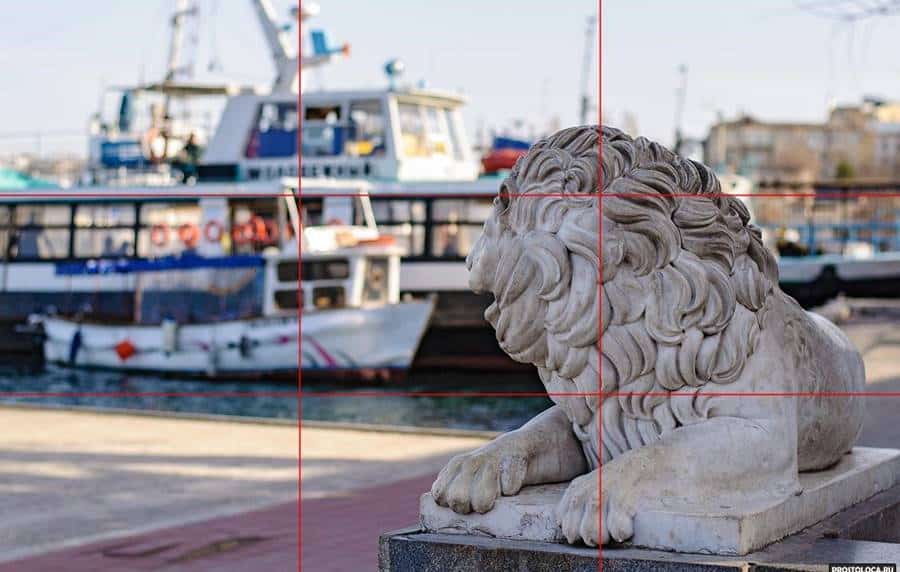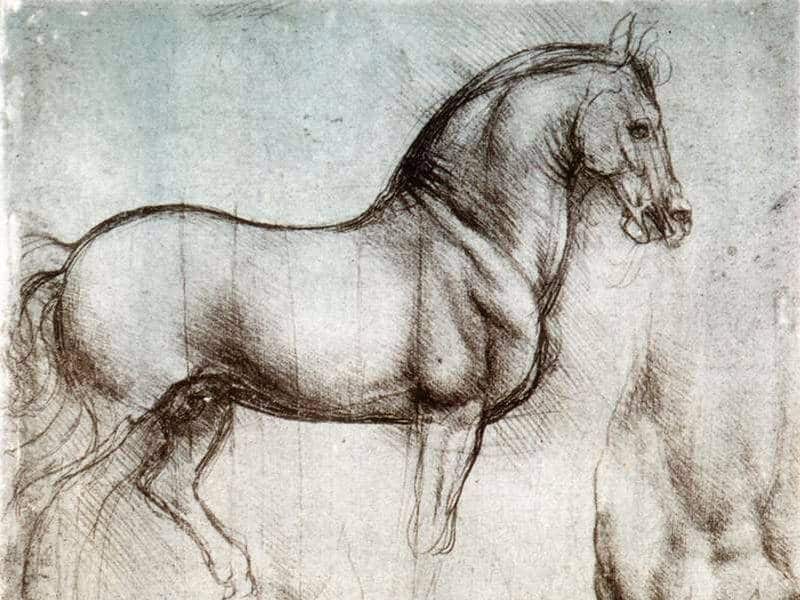The Rule of Thirds is an essential compositional technique in photography, painting, and videography. This article will look at this rule and use it effectively to take the perfect shot and combine it with other artistic techniques.
Most people who are into photography are well aware that composition is fundamental unless a beginner may doubt where to start studying this art form. And even though everyone has heard that it is impossible to place an object right in the center of the frame.
What is Rule of Thirds?
According to this rule, the photograph is mentally divided into a grid with nine equal parts formed by two horizontal and vertical lines. These lines intersect four times, and it is around these points that it is desirable to place objects in the frame. This draws the viewer’s eye to the important subject in the most natural way.

The composition of the frame is understood as the general unity of the image, that is, the ratio of the horizon line, objects, light, and color, which is pleasing to the eye and gives the frame structure a convincing sound and integrity. However, the individuality of perception does not always allow us to understand which composition can be called harmonious. The rule of thirds is one of the main techniques for achieving balance in composition, grabbing the viewer’s attention, and directing it to a particular way of reading the frame.
The frame space can be divided into parts: two, three, four, or more, depending on the conditional lines that form the boundaries of the composition objects.

The classical divisions in painting, photography, and videography are based on this golden rule. This compositional technique involves dividing the image into three parts vertically and horizontally. The visual centers of the composition are considered to be four points of intersection of lines (the so-called “points of power”), where it is recommended to place the main objects. Compliance with the rule of thirds in the visual organization of the composition allows us to solve a significant problem: to achieve a harmonious relationship between different parts of the frame (meaningful and free space).
The classical divisions in painting, photography, and videography are based on this golden rule. This compositional technique involves dividing the image into three parts vertically and horizontally. The visual centers of the composition are considered to be four points of intersection of lines (the so-called “points of power”), where it is recommended to place the main objects. Compliance with the rule of thirds in the visual organization of the composition allows us to solve an important problem: to achieve a harmonious relationship between different parts of the frame (meaningful and free space).
You may also like to read: Rules of Composition: 11 Best Compositional Rules in Photography.
How to Use Rule of Thirds in Portrait and Street Photography?
Now we’ll see how we can use it in portrait and street photography. It is a helpful method, especially when starting with photography, and must be perfectly mastered to further develop your preferences and style. This quick start guide will get you started, but the critical step is getting out and practicing as much as possible.
Portrait photography provides an excellent opportunity to apply this rule. Unlike street photography, the photographer has plenty of time to position their subject the way they want to, get the suitable composition, and get a perfectly balanced shot.
Placing the subject in the center of the photo is not attractive.

In the photo above, you can see that the subject’s face is not in any of the four intersections but the middle – the dead center of the image. Although, of course, this is how we would see the world around us and any objects if we looked directly, nevertheless, the central position of the object in the frame does not make the photo attractive and can look quite awkward.

Placing your subject along the third frame makes the photo more enjoyable.
If you align the object, not in the center, but based on the vertical line on the right, in our case, the photo will be much easier for visual perception. The picture becomes interesting for the audience. This works great for a portrait as well as street photography.

Street photography is an image of people and the environment captured in life, in their natural state, where the photographer must blend in with the background, be invisible and not influence what is happening in the frame with his presence.
There is no setting in street photography, so, of course, you can’t waste a minute when you get the opportunity to take a shot. The photographer may only have a few seconds to take a photo before the subject continues to move or leaves.
However, the principles of the rules are strictly applied. Capturing photos can be achieved by using intersection points as reference points for object placement.

In the photo, the object is placed along a vertical line.

Practice creates excellence. You can use this rule even in group photography.
This rule works exceptionally well during landscape photography and allows you to take great pictures. However, if your shot contains only one object, place it on the left side of the frame. The fact is that viewers have a habit of viewing images from left to right, which is developed by reading.

If several key subjects in the photo, position the dominant part at the lower right point. This composition of the frame considers the fact that the person best perceives the information received at the beginning and the end of the viewing. Even newscasts are built on this principle, reviewing all the stories at the beginning of the program and leaving the most neutral story for the finale to soften the perception of negative news, the majority in the report.

Likewise, when looking at your photo, the person will best perceive the latest information received. This point is crucial to consider when photographing images with emotional overtones.
You may also like to read: Rhythm in Photography.
Can I Break This Rule?
As with almost any compositional technique, the rule of thirds is not always the only recipe for a successful shot. The persistent opinion that the arrangement of objects along the thirds line makes the composition pleasing to the eye is true, but not in all cases.

Perfect symmetry is alien to balanced human perception because nothing is perfectly symmetrical in the world. Hence, the popularity of the 3×3 grid rule assumes that the placement of objects in the frame will not be centralized. However, examples of symmetry and deliberately ignoring thirds lines are not rare. In many famous works of painting, photography, and cinema, the composition is not based on this rule.

Effective composition is a tricky subject because many different details you can use to guide your eye. Great artists such as Da Vinci, Van Gogh, and Picasso can teach an absolute master class in this matter. They certainly didn’t create their masterpieces just by following this rule.
Perfect symmetry is alien to human balanced perception because nothing is perfectly symmetrical in the world. Hence the popularity of the 3×3 grid rule, which assumes that the placement of objects in the frame will not be centralized. However, examples of symmetry and deliberately ignoring thirds lines are not rare. In many famous works of painting, photography, and cinema, the composition is not based on this rule.
Conclusion
The Rule of Thirds is one of the most straightforward compositional guidelines. First of all, it is intended so that you do not make gross mistakes. Good composition is about more than just placing essential objects in the image at the intersection points of the 3×3 grid.
The best this method can do is keep you from placing your subject too close to the edge of the frame, or worse, cropping it around the edge. Also, the 3×3 grid rule tells you not to center the object for no reason. Center-positioned shots look flat, mundane, boring, and not dynamic. Try to avoid such placement. For newbies, this rule is a convenient method of composing a shot.

Hopefully, this article has given you an understanding of this photography rule and that there are many more techniques used to construct a composition than a 3×3 grid. However, this simple method will help prioritize the frame and fill it better, so don’t forget to turn on the grid display in your smartphone camera.


